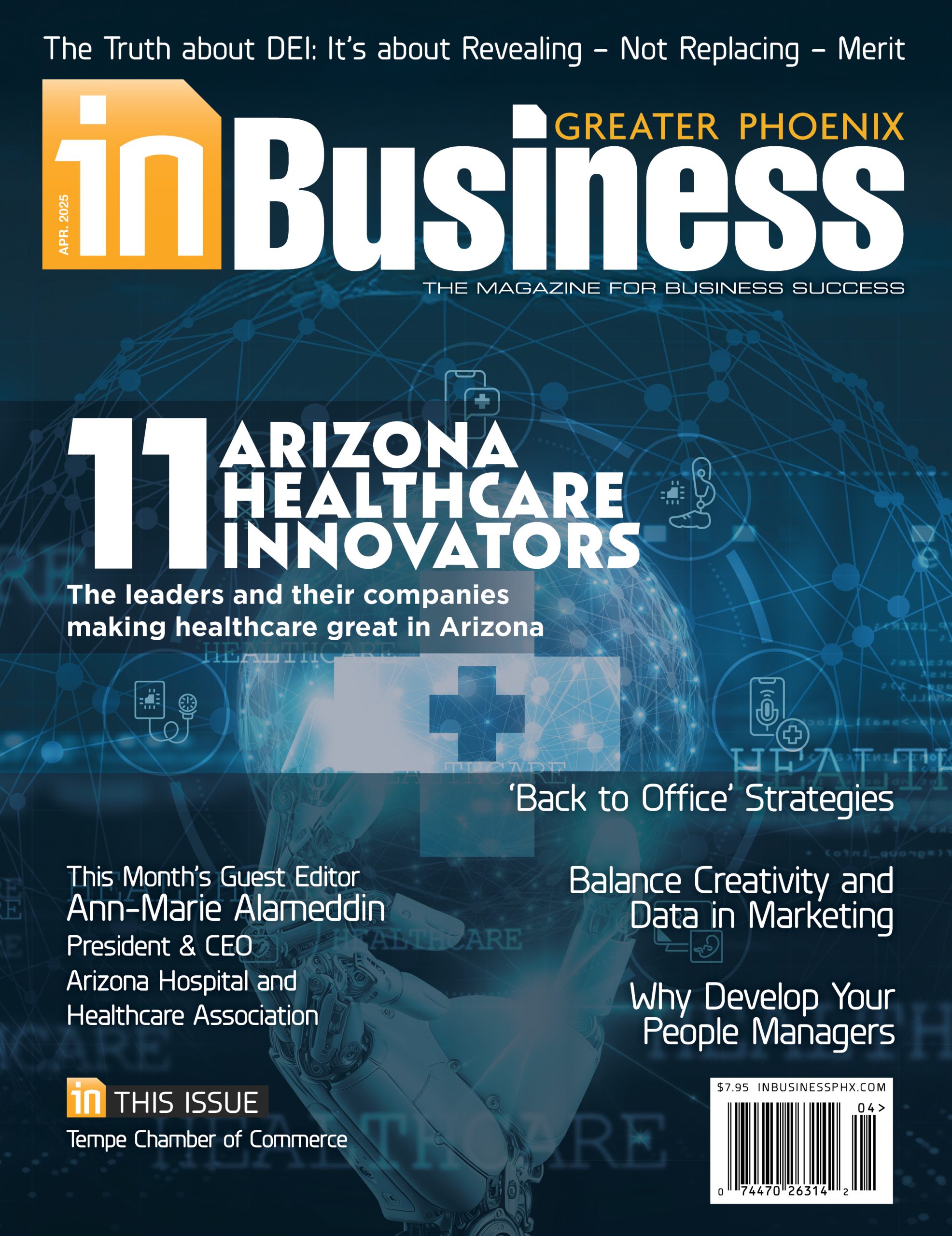 In today’s business environment, innovation alone isn’t enough.
In today’s business environment, innovation alone isn’t enough.
To stand out, companies must communicate both how they innovate and why (just ask author Simon Sinek). A chip breakthrough, a new platform or an AI-driven solution can transform industries, but only if people understand the purpose behind it, trust its technology and — of course — adopt it.
That’s where communications makes the difference.
Public relations is often treated as an afterthought, something to layer on after the product is built, the deal is signed or the policy is drafted. But in truth, communications is not a luxury — it is vital infrastructure. For technology companies in particular, the ability to tell their story clearly, credibly and consistently determines whether their innovation becomes a market leader or fades into obscurity.
At a time when artificial intelligence is reshaping how information is discovered and shared, when global competition is fierce and when trust in institutions is fragile, the question for executives is no longer, “Do I need PR?” It’s “How can I afford not to?”
Overcoming Complexity with Clarity
Few industries are as complex (or as critical) as semiconductors. Chips power everything from smartphones to satellites, yet the details of their design and manufacturing can often seem vague even to seasoned business professionals. The same can be said of renewable energy systems, advanced materials, and countless other technologies being developed today.
Engineers create, but communications ensures their work resonates. Good PR translates technical language into narratives that resonate with investors, policymakers, customers and the public — people technology companies want to do business with. It puts innovation into context, explaining not just what a new technology does but why it matters, helping companies highlight their broader mission so audiences connect with the purpose behind the work as well as the mechanics.
Consider SEMICON West, one of the semiconductor industry’s most important gatherings. When we helped bring that event to Phoenix, it wasn’t just about hosting another conference. It was about telling Arizona’s story: a region evolving into a national hub for advanced manufacturing, workforce development and technology leadership. That story amplified the state’s global visibility and attracted new investments.
Communications turned a logistical achievement into an economic one.
Earning Industry Cred in the AI Era
How people discover information is changing rapidly. Search engines powered by AI now prioritize credible, earned media over company-owned content. For semiconductor companies, this shift is profound.
In a complex, global and highly scrutinized industry, what surfaces first is often trade coverage or independent analysis. Without proactive storytelling, competitors or critics may end up defining the narrative.
That’s why PR is becoming as essential to semiconductor growth as R&D or supply chain strategy. The companies that thrive in this new environment will be those that own their brand narrative across multiple channels: traditional media, trade publications, thought leadership blogs and social platforms.
They will understand that AI doesn’t just reward visibility; it rewards credibility. And credibility grows strongest when technical achievements are aligned with a clear, mission-driven narrative that reminds audiences of both the how and the why.
And credibility isn’t bought — it’s earned through consistent, transparent communication.
Elevating Your Purpose and Position
Looking ahead, technology PR must evolve far beyond routine product announcements.
As Kyle Porter writes, “Technology PR in 2025 will be about much more than promoting products; it will be about managing innovation, positioning companies as thought leaders, and driving global conversations …” This perspective underscores the shift from traditional promotion to a more strategic role.
For example, when introducing a breakthrough technology, what resonates most isn’t the technical architecture but the tangible results it delivers — whether that’s safer operations, improved efficiency or more sustainable production. In semiconductors, investors and policymakers want to know not just how advanced a process node is but what that advancement enables in terms of real-world impact and progress.
At its best, communications doesn’t just follow innovation. It drives it. By elevating the overarching benefits of new technologies (how they improve lives, strengthen industries or advance sustainability), PR ensures innovation is understood in the fullest sense and remembered for its impact, not just its specifications.
Staying Transparent. Maintaining Trust.
The stakes are especially high when innovation touches sensitive areas: data privacy, artificial intelligence, automation and sustainability. Semiconductor manufacturers are grappling with questions about supply chains and geopolitics. AI developers are asked about bias and accountability. Renewable energy companies face scrutiny around recycling and land use.
In each case, the public wants more than a press release. They want transparency. They want to know that a company has considered the broader consequences of its work and is prepared to address them. PR professionals play a central role here — crafting messages that acknowledge risks, demonstrate responsibility and build trust.
Communications isn’t about spin; it’s about spotlighting real stewardship.
Turning Company Culture into External Impact
A strong culture doesn’t just energize employees inside a company — it can become one of the most powerful elements of a brand story. Every breakthrough is powered by people, and the world responds when those people and their passion come to light.
This is where PR plays an important role. A good partner helps uncover and share the stories that might otherwise remain behind the curtain: the morning rituals that keep teams connected, the mentoring that develops new talent, the values that guide decision-making. For example, at Kiterocket, we began a simple “Nine at Nine” check-in during the pandemic and created open-door conversations through “Coffee with Martijn.” These practices not only reinforced our culture internally but also became proof points we could share externally to demonstrate what we stand for.
By amplifying culture and people in authentic ways, communications helps companies show how and why they are relatable. That human dimension builds trust with clients, partners and communities, making progress feel real and relatable.
Responding Fast in Tough Moments
We also live in a world where crises are not hypothetical — they are inevitable. Data breaches, supply chain disruptions, product recalls, regulatory shifts: In technology, these events can unfold at lightning speed.
The difference between a company that recovers and one that collapses often comes down to communications. Does the company have a plan? Are its spokespeople prepared? Can they respond transparently and quickly, not just to the media but to the company’s own employees, partners and customers?
In the digital era, silence is not neutral — it is damaging. By engaging proactively, addressing concerns openly and demonstrating accountability, companies can turn even the toughest moments into opportunities to build trust.
Why PR Matters More Than Ever
So, why do technology companies need PR?
Because innovation without communication is invisible. Because in a world of AI-driven search and fragmented media, a reputation is being shaped whether or not the subject participates. Because engineers, entrepreneurs and executives alike deserve to have their work understood, trusted and embraced.
Public relations is not about hype. It is about clarity, credibility and connection. It ensures that the technologies reshaping our lives do so with purpose and trust. Most importantly, PR ensures that people remember not just the way companies, engineers, entrepreneurs and executives innovate but the why behind their work — keeping their mission at the forefront of how their brand is perceived.
Innovation may start in the lab. But it only reaches the world through the power of communications.
[Outer Column]
 Martijn Pierik brings nearly 30 years of experience in public relations, journalism and marketing to support Kiterocket’s growing technology and innovation practice. He provides high-level strategic counsel to the agency’s technology clients and supports business development efforts to drive agency and client growth.
Martijn Pierik brings nearly 30 years of experience in public relations, journalism and marketing to support Kiterocket’s growing technology and innovation practice. He provides high-level strategic counsel to the agency’s technology clients and supports business development efforts to drive agency and client growth.
Pierik holds degrees in international business management and marketing from Hanze Polytechnic University in the Netherlands and Northern Arizona University.












